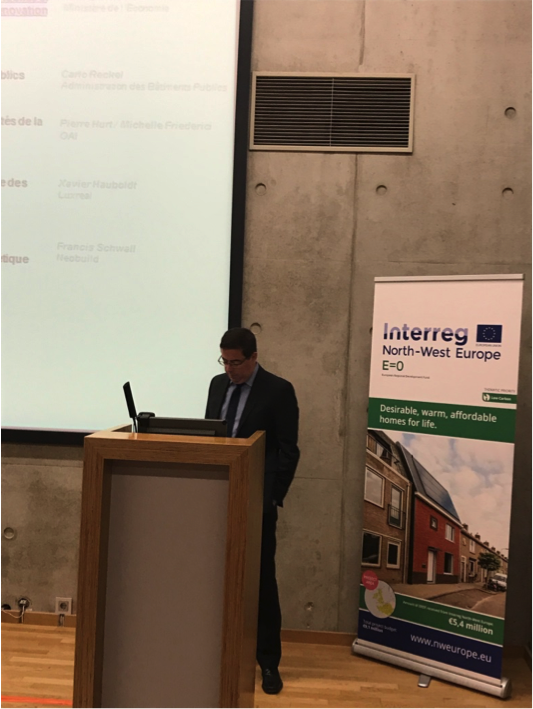Within the general framework of the European Energy Directive and the E=0 project, a first meeting between different actors influencing legislative barriers has been organized in Luxembourg. The opportunity of the round table proposed by Claude Turmes (Member of the European Parliament) has been seized on September 22nd 2017.
After having put in place several climate and energy laws for 2020, the European Parliament and the 28 EU member’s governments are now discussing 8 new bills for the 2030 horizon and further.
The building sector which represents 40% of energy consumption in Europe will have to be “carbon free” by 2050 like other targeted sectors such as electricity generation, transport or industry.
In order to integrate the expertise of economic actors in the concerned sectors, the Green MEP Claude Turmes organized on September 22nd, in collaboration with Neobuild, a round table dedicated to obstacles and strategies for renovating existing buildings in Luxembourg.
Facing an audience that included 50 professionals and experts of the construction sector, Mr. Turmes presented this renovation strategy. The most challenging objective being to "decarbonize" the entire housing stock by 2050.
To meet the objectives, one must "take into account the urban and territorial ecosystem of the building, not only the network but also urban planning, transport, etc." explained the green deputy. Similarly, he advocated that measures for low-income households must be put in place to combat "energy poverty". Finally, the use of fossil fuels should be banned in the long term.
The Energy Commissioner Tom Eischen presented the current and future legislative measures examined by the Ministry of Economy. “Which approach is better? Should we reward efforts made to save energy or punish energy waste? The question is raised”.
While the “AAA” energy standard remains the ideal goal to be achieved from an energy efficiency standpoint (for new or existing buildings), there are still many obstacles to be tackled: legislation, motivation or financing.
To solve these issues and accelerate the process, the Luxembourgish Government has defined precise guidelines, mainly aimed at improving the coordination between energy policy and heritage protection as well as an intensive promotion of sustainable construction along with circular economy.
An existing answer related to energy efficiency refurbishments was provided to the audience by Francis Schwall, Director of Neobuild, through the European project "E = 0" accordingly to the concept "EnergieSprong" supported at the EU level by the Interreg NWE program and nationally by the Housing and Economy Ministries.
This unprecedented project consists of reducing the energy consumption of homes to almost zero by renovating them efficiently, affordably and quickly. Equipped in less than a week with solar panels, highly insulating facades, roofs and new energy equipment, refurbished units are designed not to consume more energy than they produce.
The Director of OAI (Architects and Engineers Organization), Pierre Hurt, outlined that sustainable development is not just about energy. Other factors such as materials, quality of life or production are taken into account. The design phase of the buildings is then essential. It is the expertise of the different actors of the project (architects, consulting engineers, town planners ...) and their common design efforts that will allow offering the inhabitants a comfortable living environment. Legislation must follow this principle and must also be reflected upstream, in order to be in line with needs and reality.
In this race for energy innovation and efficiency, many ideas and actions are taking shape, both nationally and internationally. However, barriers such as legal and urban planning remain before the concept "EnergieSprong" can fully develop.
To meet success in the long run, materials quality, circular economy, durability of solutions, guarantee of performance and new functionalities are all key steps to be combined with energy performance.

